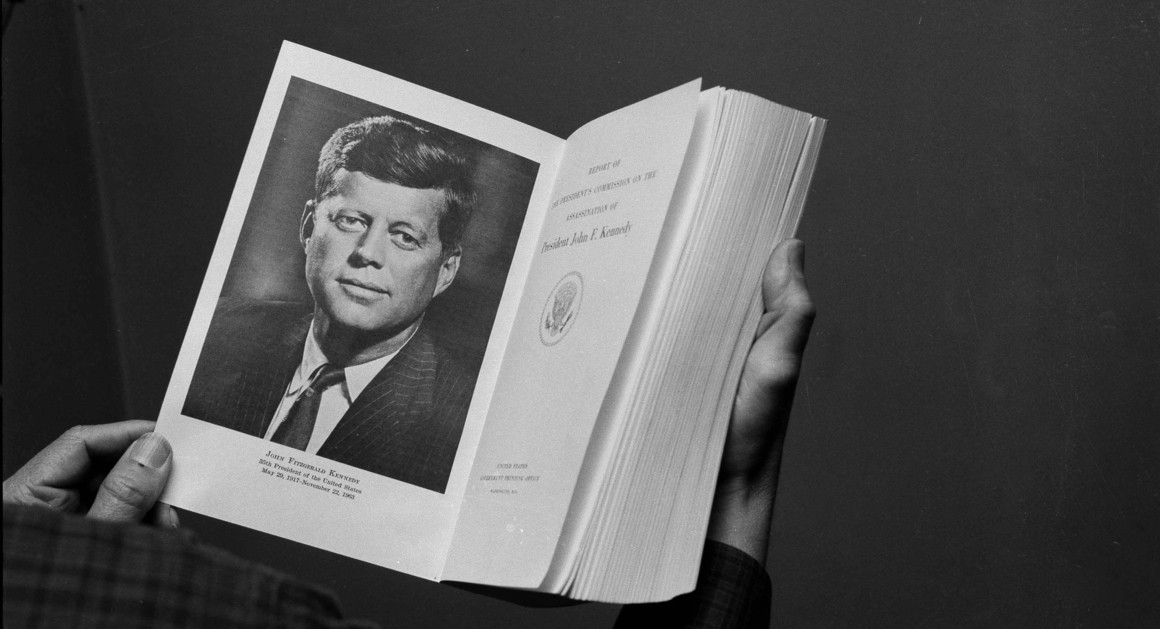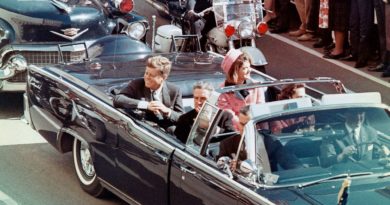LBJ launches probe into JFK’s assassination, Nov. 29, 1963

This is the inside cover of the Warren Commission report, released in September 1964. | AP Photo
On this day in 1963, one week after President John F. Kennedy was fatally shot in Dallas, Lyndon B. Johnson, his successor, created a commission chaired by Earl Warren (1891–1974), then chief justice of the U.S. Supreme Court, to investigate the assassination.
On Sept. 24, 1964, the seven-member panel — known in posterity by its informal name, the Warren Commission — presented its 888-page report to Johnson. Made public three days later, it concluded that Lee Harvey Oswald acted alone in assassinating Kennedy and injuring Texas Gov. John Connally, also a Democrat. Since Oswald was fatally shot by Jack Ruby, a nightclub owner, soon after Kennedy’s murder, Oswald’s motive has never been determined conclusively.
Advertisement
The commission further found that the U.S. Secret Service had been ill-prepared for JFK’s Nov. 22 visit to Dallas. These findings prompted the protective arm of the service to change its presidential security procedures.
Subsequently, the commission came under criticism for its methods, omissions and conclusions. One commission member, Rep. Gerald Ford (R-Mich.), , the House minority leader, and a future president, said the CIA had either destroyed evidence or kept it from investigators to avoid exposing secrets involving “potentially damaging operations.” The CIA actions, Ford added, could “easily be misinterpreted as collusion in JFK’s assassination.”
The remaining five commission members were: Sens. Richard Russell (D-Ga.), John Sherman Cooper (R-Ky.), Rep. Hale Boggs (D-La.), who was the House majority whip, Allen Welsh Dulles, a former director of Central Intelligence and head of the CIA and John McCloy, a former president of the World Bank.
Critics also cited reports by ballistics experts and a home movie shot at the assassination scene in Dealey Plaza to dispute the commission’s “lone gunman” theory. But three subsequent U.S. government investigations — a 1968 panel set up by Attorney General Ramsey Clark, the 1975 Rockefeller Commission, as well as a probe by the House Select Committee on Assassinations in 1978-79 — agreed with the Warren Commission’s conclusion that two bullets had struck JFK from the rear. The House panel, however, said Oswald’s actions probably stemmed from a conspiracy.
Earlier this month, the National Archives made public more than 13,000 additional documents from its JFK assassination files. The release, the fourth since the summer, primarily covers documents that had been previously released, but with sensitive information previously redacted. The new versions posted online compiled with a 1992 law that mandated the maximum release possible of documents by 2017.
President Donald Trump has waved off protests by the FBI and CIA, ordering the agencies to divulge all their remaining assassination files by April 26, 2018, except for the names and addresses of people who are still alive.
SOURCE: “REASONABLE DOUBT: AN INVESTIGATION INTO THE ASSASSINATION OF JOHN F. KENNEDY,” BY HENRY HUNT (1985)
*** This article has been archived for your research. The original version from POLITICO can be found here ***


